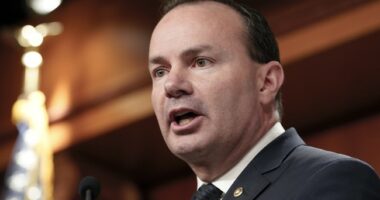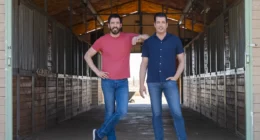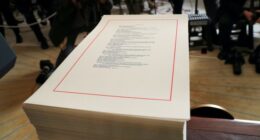Anthony Albanese’s promise to slash immigration from record-high levels is looking increasingly hollow during a housing crisis.
During the last financial year, 445,600 migrants flooded into Australia.
This was 50,600 higher than the 395,000 level forecast for 2023-24 in the May Budget papers.
The difference between what Treasury forecast and the number who arrived is almost equivalent to a major regional centre like Albury, the Australian Bureau of Statistics data released this week showed.
SQM Research managing director Louis Christopher said renters were likely to keep suffering into next year, with immigration moderating from last year’s record-high levels above 500,000.
‘Another year of rapidly expanding population compared to our low building rate will keep the pressure on tenants in 2025,’ he said.
Mr Christopher said the increase in rental vacancies, compared with a year ago, had more to do with an increasing number of people living in share accommodation rather than a boost in new housing.
‘While we still have rental shortages in our two largest capital cities, the situation has clearly improved from the very difficult days of 2021 to 2023,’ he said.

Anthony Albanese ‘s promise to slash immigration from record-high levels is looking increasingly hollow during a housing crisis
‘I think this is mainly due to the number of occupiers increasing per property.
‘Sky high rents have forced many to make compromises in their living arrangements.’
Australia’s most overcrowded cities Sydney and Melbourne are also continuing to take a larger share of new foreigner arrivals.
NSW took in 142,473 migrants, on a net basis factoring in overseas departures, ahead of Victoria’s intake of 132,859.
Both states together accommodated 62 per cent of Australia’s 445,600 new overseas residents arriving during the last financial year.
When Queensland’s 74,932 tally was added to the mix, that saw Australia’s three biggest states on the east coast housing 78.4 per cent of new immigrants.
This is also occurring during a housing crisis that has led to a double-digit annual surge in rents in some cities.
The big overseas influx into Sydney has led to an exodus of local residents to other states, where rental vacancies are already very tight.

During the last financial year, 445,600 migrants flooded into Australia. This was 50,600 higher than the 395,000 level forecast for 2023-24 in the May Budget papers (pictured is Sydney’s Pitt Street mall)
Queensland gained 29,910 new residents from other states during the last financial year as 30,865 people left New South Wales to escape Sydney’s unaffordable housing.
Brisbane’s rental vacancy rate last month was 1.1 per cent, or a level below the national average of 1.4 per cent, new SQM Research data revealed.
But Perth was an even worse place for renters with an ultra-tight rental vacancy rate of 0.6 per cent – the tightest in Australia.
Western Australia also had the nation’s strongest population growth rate of 2.8 per cent as 9,742 new residents arrived from interstate on top of 58,082 from overseas.
The national annual population growth pace of 2.1 per cent marked a moderation from the 2.5 per cent level of late 2023.
This was the highest since the early 1950s when a record 548,800 migrants a year were still piling into Australia.
The natural increase, or births minus deaths, of 106,400 made up just 19 per cent of Australia’s annual population increase of 552,000 in 2023-24, with the rest coming from immigration.








